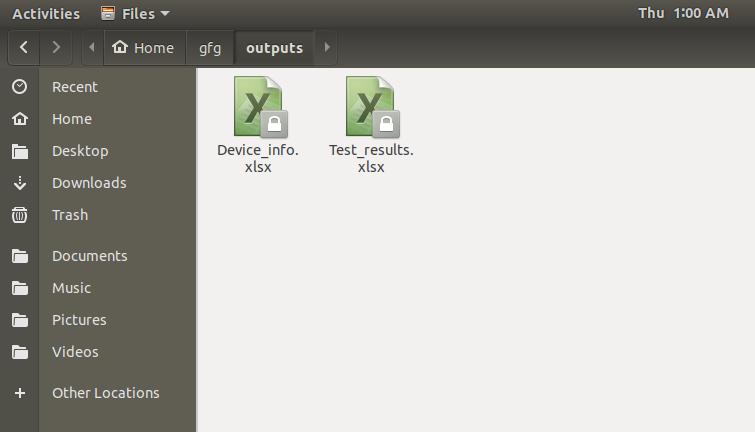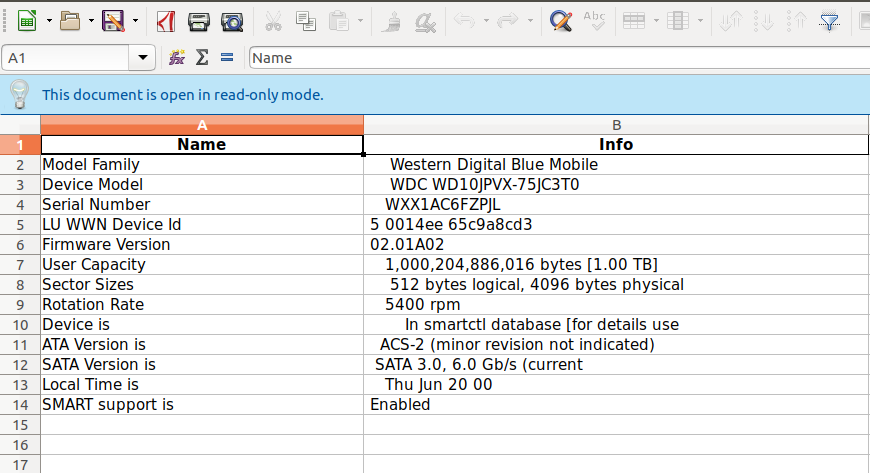Python|使用 smartmontools 监控硬盘运行状况
Smartmontools是“SMART 监控”工具的首字母缩略词,是一个使用SMART (自我监控、分析和报告技术)系统控制和监控计算机存储系统的软件包,该系统内置于大多数现代 (P)ATA、串行 ATA、SCSI/ SAS 设备。
它包含 2 个实用程序: smartctl和smartd 。这些实用程序提供有关磁盘降级和故障的警告或警报。
smartmontools可用于任何基于 Unix/Linux 的操作系统。它允许我们运行各种测试来检查系统中 HDD 或 SSD 的运行状况。
聪明的
大多数现代硬盘驱动器使用 SMART(自我监控、分析和报告技术)来评估其状况,以确定设备是否有问题。这允许用户查看硬盘驱动器的 SMART 数据并采取必要的措施来修复或更换设备。
在本文中,我们将探索 smartmontools 并检索系统中 HDD 和 SSD 的信息。我们还将编写一个Python脚本来解析 smartmontools 的输出并将输出存储在 Excel 表中。
安装 –
sudo pip3 install pandas
sudo apt-get install smartmontools 安装 smartmontools 后,我们可以使用终端或命令行来获取硬盘驱动器的详细信息。
设备信息 -
要查看您的设备是否支持SMART监控,以及获取设备型号、容量、序列号等其他信息,我们使用以下命令:
sudo smartctl -i /dev/sda
如果未启用,则以下命令启用 SMART 监控:
sudo smartctl -s on /dev/sda
检查设备的健康状况
要显示磁盘的整体健康状况,我们使用以下命令:
sudo smartctl -H /dev/sda这将显示硬盘驱动器的状态。如果它显示任何错误,那么您的硬盘驱动器可能遇到了一些问题,您应该考虑备份您的数据。

测试——
运行一个简短的测试:
sudo smartctl --test=short /dev/sda
简短测试的目标是快速识别有缺陷的硬盘驱动器。因此,短测试的最长运行时间为 2 分钟。
要运行长时间的测试:
sudo smartctl --test=long /dev/sda长时间的测试也可以识别缺陷,但这里没有时间限制。测试更彻底。

要检查测试结果:
sudo smartctl -l selftest /dev/sda
一个例子 -
我们可以使用Python自动执行此过程并生成报告。为此,我们将使用 Pandas 将结果存储在 excel 表中,并使用 os 模块来运行命令。
# importing libraries
import os
import pandas as pd
from pandas import ExcelWriter
# class to hold all the
# details about the device
class Device():
def __init__(self):
self.device_name = None
self.info = {}
self.results = []
# get the details of the device
def get_device_name(self):
cmd = 'smartctl --scan'
data = os.popen(cmd)
res = data.read()
temp = res.split(' ')
temp = temp[0].split('/')
name = temp[2]
self.device_name = name
# get the device info (sda or sdb)
def get_device_info(self):
cmd = 'smartctl -i /dev/' + self.device_name
data = os.popen(cmd)
res = data.read().splitlines()
device_info = {}
for i in range(4, len(res) - 1):
line = res[i]
temp = line.split(':')
device_info[temp[0]] = temp[1]
self.info = device_info
# save the results as an excel file
def save_to_excel(self):
try:
os.mkdir('outputs')
except(Exception):
pass
os.chdir('outputs')
col1 = list(self.info.keys())
col2 = list(self.info.values())
output = pd.DataFrame()
output['Name'] = col1
output['Info'] = col2
writer = ExcelWriter('Device_info.xlsx')
output.to_excel(writer, 'Info_report', index = False)
workbook = writer.book
worksheet = writer.sheets['Info_report']
# Account info columns
worksheet.set_column('A:A', 35)
# State column
worksheet.set_column('B:B', 55)
# Post code
# worksheet.set_column('F:F', 10)
writer.save()
os.chdir('..')
# function to check the health
# of the device
def check_device_health(self):
cmd = 'smartctl -H /dev/' + self.device_name
data = os.popen(cmd).read()
res = data.splitlines()
health = res[4].split(':')
print(health[0] + ':' + health[1])
# function to run the short test
def run_short_test(self):
cmd = 'smartctl --test = short /dev/' + self.device_name
data = os.popen(cmd).read().splitlines()
# function to get the results
# of the test.
def get_results(self):
cmd = 'smartctl -l selftest /dev/' + self.device_name
data = os.popen(cmd).read()
res = data.splitlines()
# stores the names of columns
columns = res[5].split(' ')
columns = ' '.join(columns)
columns = columns.split()
info = [columns]
# iterate through the important
# rows since 0-5 is not required
for i in range(6, len(res)):
line = res[i]
line = ' '.join(line.split())
row = line.split(' ')
info.append(row)
# save the results
self.results = info
# function to convert the
# results of the test to an
# excel file and save it
def save_results_to_excel(self):
# create a folder to store outputs
try:
os.mkdir('outputs')
except(Exception):
pass
os.chdir('outputs')
# get the columns
columns = self.results[0]
# create a dataframe to store
# the result in excel
outputs = pd.DataFrame()
col1, col2, col3, col4 = [], [], [], []
l = len(self.results[1])
# iterate through all the rows and store
# it in the data frame
for i in range(1, len(self.results) - 1):
if(len(self.results[i]) == l):
col1.append(' '.join(self.results[i][2:4]))
col2.append(' '.join(self.results[i][4:7]))
col3.append(self.results[i][7])
col4.append(self.results[i][8])
else:
col1.append(' '.join(self.results[i][1:3]))
col2.append(' '.join(self.results[i][3:6]))
col3.append(self.results[i][6])
col4.append(self.results[i][7])
# store the columns that we
# require in the data frame
outputs[columns[1]] = col1
outputs[columns[2]] = col2
outputs[columns[3]] = col3
outputs[columns[4]] = col4
# an excel writer object to save as excel.
writer = ExcelWriter('Test_results.xlsx')
outputs.to_excel(writer, 'Test_report', index = False)
# manipulating the dimensions of the columns
# to make it more presentable.
workbook = writer.book
worksheet = writer.sheets['Test_report']
worksheet.set_column('A:A', 25)
worksheet.set_column('B:B', 25)
worksheet.set_column('C:C', 25)
worksheet.set_column('D:D', 25)
# saving the file
writer.save()
os.chdir('..')
# driver function
if __name__ == '__main__':
device = Device()
device.get_device_name()
device.get_device_info()
device.save_to_excel()
device.check_device_health()
device.run_short_test()
device.get_results()
device.save_results_to_excel()
输出 :

设备信息: 
测试结果: 